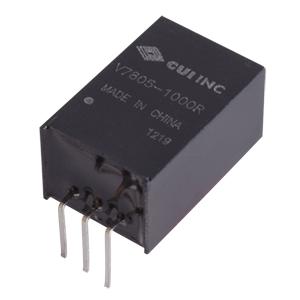A common theme in electronics is being able to create cooler, better, more interesting gadgets because someone developed a new, cooler, better, more interesting part.
This happens all the time — the advent of small, easy-to-use GPS units make all kinds of navigation projects feasible; the availability of efficient LEDs makes many lighting projects worthwhile; and certainly the advent of the Arduino ecosystem has made microcontroller-based projects, in some cases, literally hundreds of times easier.
Along with all of these cool new toys, occasionally a particularly successful part will work its way into not only common usage, but electronics lore. Parts like the 555 timer, 2N2222 transistor, LM386 audio amplifier, LM741 op-amp, and LM7805 linear voltage regulator.
Every once in a blue moon, these old standbys will also get a makeover, improving performance and opening up new possibilities.
Take the LM7805, for example. It does a good job of regulating voltage — from a minimum of about 7V or so, it will provide a steady 5VDC output. The only real problem is that it does this by basically adding a dynamic resistance to simply burn off the excess voltage at whatever current you’re using. If you were to power a 5V, 1A load through a LM7805 connected to 12V, it would need to dissipate 7W of power, since it would basically be acting as a resistor; that 7V voltage drop, combined with the 1A of current, means it would be putting out 7W of heat. Without a BIG heatsink, it would quickly get too hot to work. Also, you’d be wasting over half of the power for the device, even if the rest of your circuit was 100% efficient.
Enter the V7805-1000R from CUI. It’s a switched-mode, drop-in replacement for the LM7805. Replace the LM7805 with this, and your regulator is suddenly more than 90% efficient. (Efficiency in switched-mode regulators varies with voltage and current.)
A drop-in, 90% efficient LM7805? Yes, please! I love living in the future.


